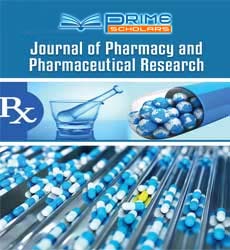Perspective - (2023) Volume 7, Issue 3
Navigating the Culinary Pharmacy: The Intricacies of Food-Drug Interactions
Mycin Juker*
Department of Medicine, Alexandria University, Egypt
*Correspondence:
Mycin Juker,
Department of Medicine, Alexandria University,
Egypt,
Email:
Received: 29-Aug-2023, Manuscript No. IPIPR-23-18169;
Editor assigned: 31-Aug-2023, Pre QC No. IPIPR-23-18169 (PQ);
Reviewed: 14-Sep-2023, QC No. IPIPR-23-18169;
Revised: 19-Sep-2023, Manuscript No. IPIPR-23-18169 (R);
Published:
26-Sep-2023, DOI: 10.21767/ipipr.7.03.029
Introduction
The consumption of food and medications is a daily ritual for
many, but what happens when these two essentials intersect in
the human body? Food-drug interactions, a complex and often underappreciated
phenomenon, can significantly impact the efficacy
and safety of medications. In this article, we will explore the intricacies
of food-drug interactions, their implications, and the importance
of understanding how our dietary choices can influence the
way drugs work. Food-drug interactions occur when the consumption
of certain foods affects the way a medication is absorbed,
metabolized, or excreted. These interactions can lead to various
outcomes, such as decreased drug effectiveness, increased risk of
side effects, or altered therapeutic responses.
Description
There are three main categories of food-drug interactions: Pharmacokinetic
interactions involve alterations in the absorption,
distribution, metabolism, or excretion of a drug. For example, consuming
high-calcium foods with tetracycline antibiotics can reduce
drug absorption due to the formation of insoluble complexes in
the stomach. Pharmacodynamic interactions occur when certain
foods influence the effects of a drug at the target site in the body.
An example is the consumption of tyramine-rich foods (e.g., aged
cheeses and wine) while taking Monoamine Oxidase Inhibitors
(MAOIs), which can lead to a potentially life-threatening hypertensive
crisis.
Drug-nutrient interactions involves drugs depleting or enhancing
the levels of specific nutrients in the body. For instance, diuretics
can lead to potassium loss, necessitating dietary adjustments to
maintain optimal potassium levels. Food can significantly impact
a drug’s efficacy. For instance, taking certain medications with a
high-fat meal can enhance drug absorption, leading to a more
potent therapeutic effect. On the other hand, consuming certain
foods with calcium, magnesium, or iron can interfere with the
absorption of some medications. Incompatible food-drug combinations
can lead to increased drug levels in the bloodstream, resulting
in side effects or even toxicity. Proper awareness of these
interactions can help prevent potentially harmful consequences.
Failure to recognize and manage food-drug interactions can lead
to therapeutic failure, where a patient’s condition does not improve
as expected. This may result in treatment adjustments or
the need for alternative medications.
Understanding food-drug interactions is crucial for both healthcare
professionals and patients. Patients should be proactive in
discussing their dietary habits with their healthcare providers, as
well as any potential interactions that might affect their medications.
Healthcare professionals, on the other hand, should take the
time to educate patients on how to optimize the benefits of their
prescribed treatments and avoid adverse effects related to fooddrug
interactions. Additionally, food labeling and drug information
should provide clear guidance on potential interactions, allowing
consumers to make informed choices.
Conclusion
Pharmacists, as medication experts, can also play a pivotal role
in patient education and counseling regarding food-drug interactions.
Food-drug interactions are a fascinating and complex aspect
of healthcare that deserves greater recognition and understanding.
Our dietary choices can significantly influence the effectiveness
and safety of medications, making it essential for healthcare
providers, patients, and even policymakers to take proactive steps
to educate, inform, and ensure that individuals can make informed
choices about their medications and diets. In this culinary pharmacy,
knowledge is the key to optimizing health outcomes and minimizing
risks related to food-drug interactions.
Citation: Juker M (2023) Navigating the Culinary Pharmacy: The Intricacies of Food-Drug Interactions. J Pharm Pharm Res. 7:029.
Copyright: © 2023 Juker M. This is an open-access article distributed under the terms of the Creative Commons Attribution License, which permits unrestricted use, distribution, and reproduction in any medium, provided the original author and source are credited.

